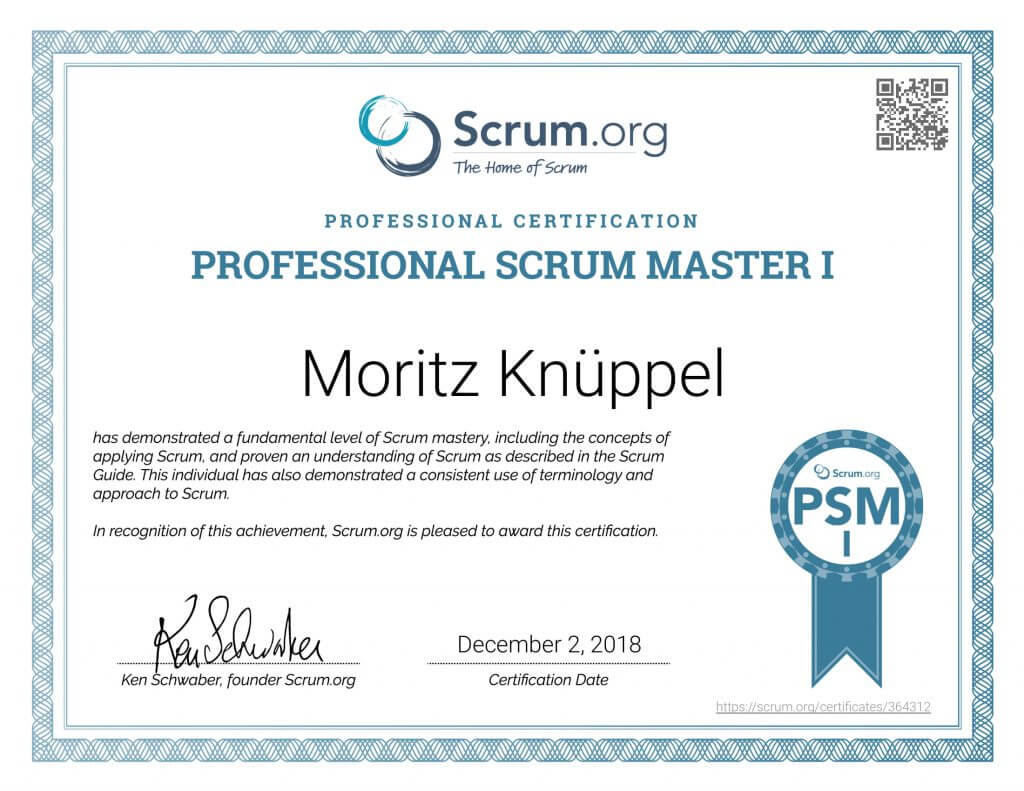PSM I
The Professional Scrum Master I certification, commonly known as PSM I, is Scrum.org’s most common certification.
Those awarded with it are certified:
- a fundamental understanding of Scrum
- consistent use of its terminology

BASIC INFO
- Duration: 60 minutes
- Questions: 80; multiple-choice, multi-select, true/false
- Passing score: 85%
- Number of certification holders: 300,000+
ABOUT THE QUESTIONS
In PSM I, the question revolve primarily around the immediate and literal understanding of the Scrum framework as described in the Scrum Guide. It focusses particularly on the roles within a Scrum Team and the Scrum Events. It also checks one’s familiarity with Scrum-related terminology like “time-box” and “empiricism”.
Almost all questions in PSM I have clear answers based directly on the Scrum Guide. Only a few questions require abstract knowledge transfer.
Questions with multi-select options, i.e. those where many answers are correct, will inform you how many answers to select. They will for example state “(choose the best three answers)”.
HOW TO PREPARE FOR PSM I
PSM I is a basic exam and one can pass it well without attending a dedicated PSM I training session, for example by preparing with my book, which contains all the necessary preparations for the exam.
Read the Scrum Guide a few times until you are comfortable with its terminology and the concepts it describes. One should place a special focus on the roles, artifacts, and events. Additionally, reviewing the Scrum Glossary is recommended.
Take the free Scrum Open assessment. The questions presented in it are part of the exam pool for the PSM I and representative of the questions overall in terms of formulation and style. A good rule of thumb is to practice it enough until you can pass it with a perfect score three times in a row, using less than 10 minutes each time.
Use the practice quiz provided below.
PSM I PRACTICE QUIZ
